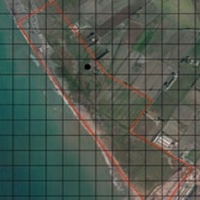A fine-grained bird Atlas as tool for spatial monitoring: a case study from a remnant wetland during the breeding period (Torre Flavia, central Italy)

All claims expressed in this article are solely those of the authors and do not necessarily represent those of their affiliated organizations, or those of the publisher, the editors and the reviewers. Any product that may be evaluated in this article or claim that may be made by its manufacturer is not guaranteed or endorsed by the publisher.
Accepted: 16 September 2020
Authors
During the 2019 breeding period we carried out a bird atlas for a small coastal natural reserve (Torre Flavia wetland, Special Protection Area IT6030020, central Italy), comparing quantitative data of spatial occurrences with records from an analogous study carried out in 2005. From 2005 to 2019 some water-related species increased their frequency of occurrence (Fulica atra, significantly). Among the reed and rush-bed species, Acrocephalus scirpaceus spatially increased and Cisticola juncidis decreased significantly. Among ecotonal, synanthropic and open habitat species, we registered a significant increase of Chloris chloris. A decreasing trend of Passer italiae, Saxicola torquatus, Emberiza calandra, although not significant, may be probably linked to regional or continental factors. Both causes at local (reedbed expansion, rushbed reduction, water-level management) and at larger scale (decline in their continental range) can explain the observed changes in spatial occurrences during this medium-long temporal range. Local atlases can be quick tools useful to drive management strategies in remnant wetlands.
How to Cite
PAGEPress has chosen to apply the Creative Commons Attribution NonCommercial 4.0 International License (CC BY-NC 4.0) to all manuscripts to be published.







